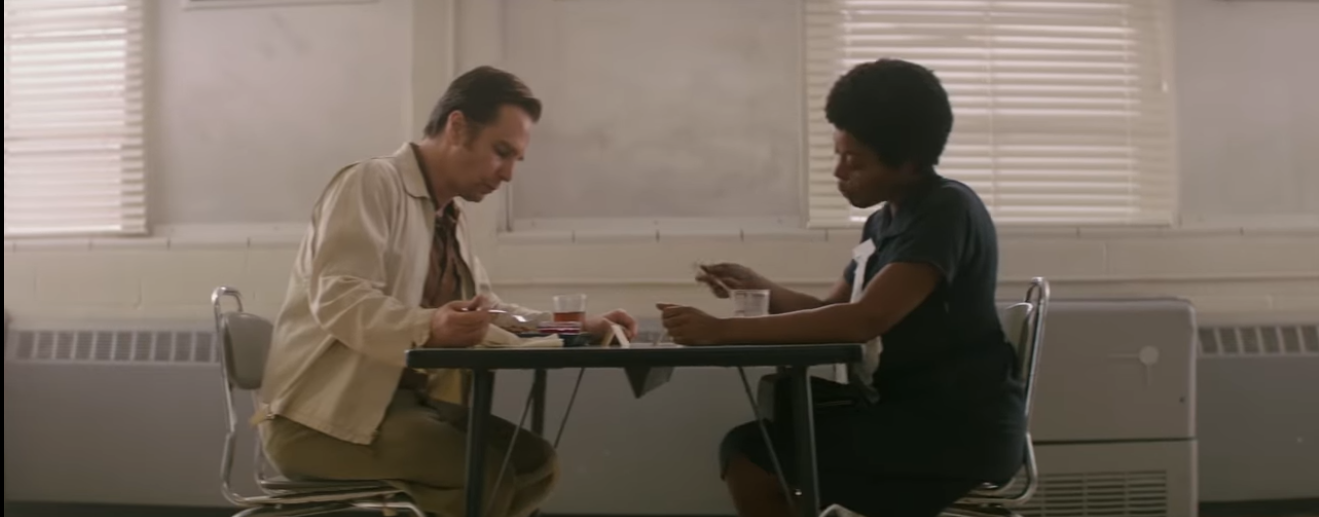[T]hat an unapologetic Klansmen could not have become a repentant hero so quickly.
Review: ‘The Best of Enemies’ is an inspiring movie about racism and redemption

By Tom Siebert
It is the summer of 1971 in post-Civil Rights Act America. But many cities from Biloxi to Boston hadn’t yet gotten the memo that segregated schools were illegal, based on the landmark Brown versus Board of Education ruling by the U.S. Supreme Court in 1954.
One of those places is Durham, North Carolina, where an electrical fire badly damages an all-black elementary school, igniting a community furor over whether the displaced children would be allowed to attend classes in the same building as white students.
That is the true premise of “The Best of Enemies,” an edifying film that lengthily and arduously answers the innocent question that little Marilyn Atwater asks her single mother Ann: “Mommy, where are we going to go to school now?”
Ann Atwater was a battle-weary, tough-talking, black advocate. She was also a force of nature, and actress Taraji P. Henson’s portrayal of her is a tour de force that may earn her an Academy Award, one of the few acting honors she did not win for her stoic performance in the excellent “Hidden Figures.”
Ann first shows up in the movie pulling a phone receiver out of a city councilman’s hand in his office and hitting him in the head with it because he wasn’t listening to her. In a later scene she angrily turns around the swivel chair of a white councilman who had turned his back on her because she and her fellow fair-housing petitioners were black.
“What we’re talkin’ about is damn important and you gonna listen to us!” she shouts at the bespectacled, bewildered city lawmaker.
The U.S. civil rights movement was led admirably by a silver-tongued orator, Dr. Martin Luther King Jr. But it also needed no-nonsense “sistahs” such as “Roughhouse Annie” Atwater, as she was dubbed, to courageously clean up the primordial sleaze of institutionalized racism.
The astonishing untold story of “The Best of Enemies” is that the Ku Klux Klan, a domestic terrorist organization, was still infiltrating and influencing the civic and business life of cities like Durham as late as the early ‘70s. To call the Klan a “white supremacist” group would be a misnomer because they hated not just African Americans but Jews and Catholics as well.
The KKK of that era had stripped off their white hoods and robes but could no longer get away with lynchings and cross burnings. However, in Durham town at that time, the Klan still retained enough clout to sway a city council vote in favor of a white slumlord and to use a flimsy code violation to shut down a hardware store that was managed by a black man, who was also a Vietnam War veteran.
But the Klansmen could still commit atrocious acts. They shoot up the home of a young white woman rumored to be in an interracial relationship. This harrowing scene is filmed in slow motion, as if it were straight out of a Sam Peckinpah Western.

The president of the local Klan is C.P. Ellis, who also runs a whites-only gas station in town. Actor Sam Rockwell, who won an Oscar last year for “Three Billboards Outside Ebbing, Missouri,” plays Mr. Ellis convincingly as the monster he was as well as the redeemed man he was to become.
His transformation begins with a random act of kindness, not by him but by Ms. Atwater. Mr. Ellis and his wife Mary, played by Anne Heche, have an intellectually challenged son who lives away from home in a mental health facility.
Ann manages to secure a private room for the Ellis’ son in the facility, so that he can be more comfortable and less likely to experience emotional outbursts. This Good Samaritan turn leads to Mary visiting and bonding with Ann, and leaves C.P. wondering why his bitter enemy would do something so nice for his family.
Enter Bill Riddick, a judge-appointed negotiator specializing in the “charette,” a deadline-driven series of meetings designed to peacefully settle disputes. Mr. Riddick, portrayed by Gambian-English actor Babou Ceesay, is the unsung hero of the film who keeps a calm demeanor amidst the histrionics of the warring factions.
Both Ann and C.P, who had feuded for years, reluctantly agree to co-chair the 10-day, 12- member charette, in which a two-thirds majority of votes are needed to recommend school desegregation to the city council.
So for a brief, shining time, Durham becomes a functioning democracy, with a few stops and starts. Ann prevents some African American men from destroying a KKK display at the meeting hall.
And in a particularly horrific scene, a couple of Klansmen break into the home of a young female member of the charette. One holds up a baseball bat, and the other apparently assaults the woman sexually, in order to terrify her into voting against desegregation.
Meanwhile, during one of the meetings, a black minister suggests tamping down the heated discussions by ending them with gospel singing. Mr. Ellis, a churchgoer himself, wanders into the all-black worship service.
Ann waves a Bible at him. “This here does the talking for me.”
“I have a Bible,” he responds.
“Well, then, you ought to know … same God made you made me,” Anne asserts.
That appears to be C.P.’s transformative moment. But no one knows for certain how he will vote on the racial equality issue, least of all himself.
Director Robin Bissell masterfully builds up tension to the dramatic final vote, tautly capturing the nervous and sweaty white and black faces on opposite sides of the meeting hall, as each member of the charette walks up the podium to announce and cast their ballots on pieces of paper.
And as Hollywood would have it, Mr. Ellis’ vote is the decisive one.
Some critics have falsely assailed this movie, claiming that it is too slick and simplistic, and that an unapologetic Klansmen could not have become a repentant hero so quickly. But Bill Riddick, who is still alive, has confirmed the basic facts of the film.
And while the story is about race, it is not black and white in its moral nor morality. Both the protagonist and antagonist behave badly at times, spitting out racial epithets and profanities. But they both do great good, too.
Moreover, the real-life Ms. Atwater and Mr. Ellis, who are shown in vintage interviews during the closing credits, remained friends for more than 30 years. She gave a eulogy at his funeral in 2005, before passing away herself in 2016.
Finally, movie audiences are casting their votes in favor of this fine film across the country. They are cheering Ms. Atwater as she goes up against the white-privileged establishment, tearing up at the emotional denouement, and applauding at the end.
Watch movie trailer… http://stxmovies.com/thebestofenemies/
Other articles at XPian News at… https://xpian.news/category/film/

Tom Siebert
Tom Siebert has a BS in journalism from the University of Illinois and many years' experience as a writer/editor. As seen in: Chicago Tribune, Medium, The Beacon News, Barrington Courier-Review,Patch, South Florida Sun Sentinel, San Diego Citybeat




Comments are Closed